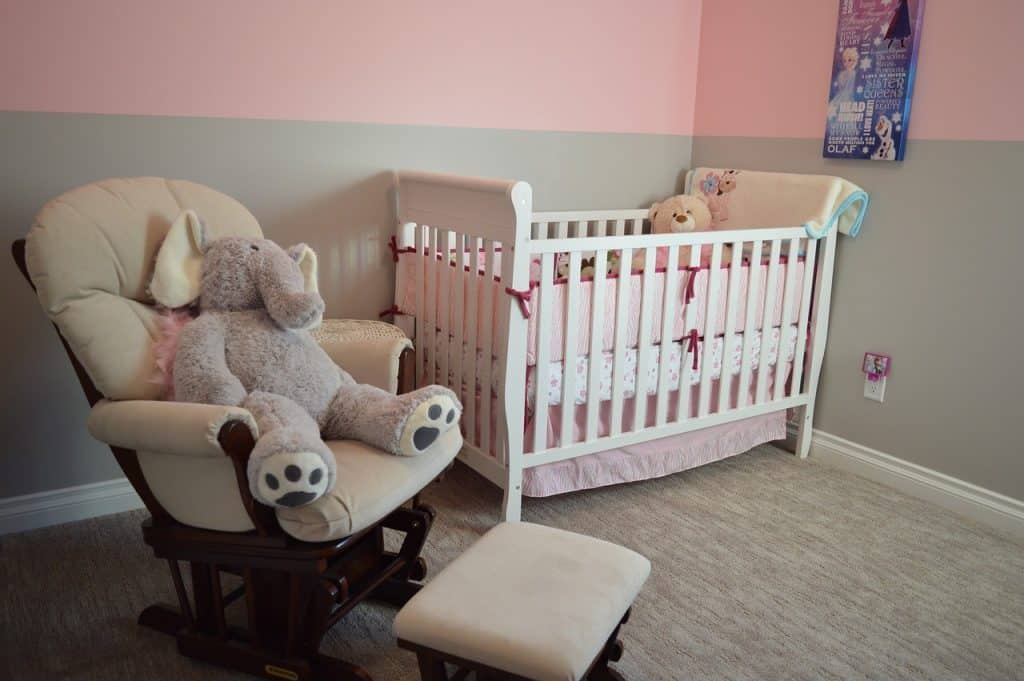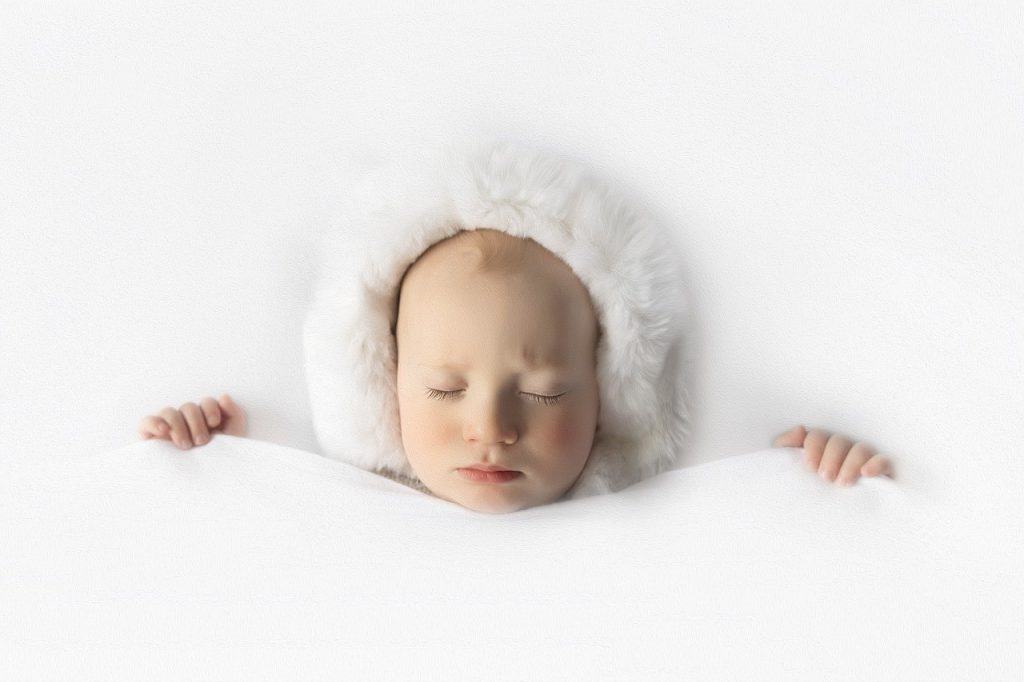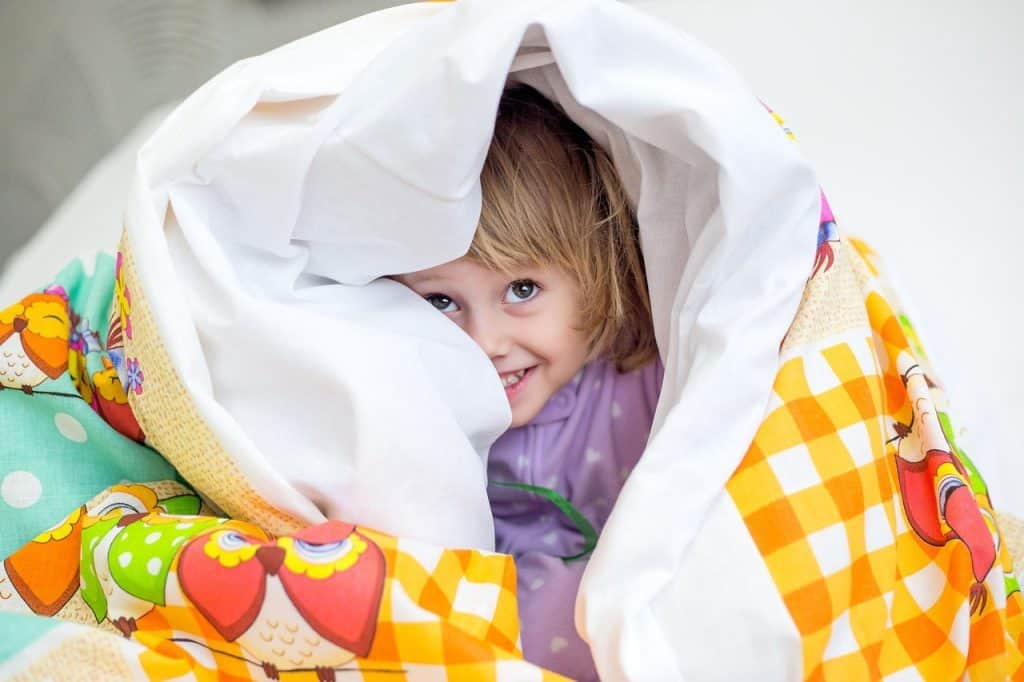Many parents opt to make their babies use sleeping bags to reduce the chance of sudden infant death syndrome (SIDS). Sleeping bags help children be safe and snug during slumber until age two. Once your child is ready, you can slowly introduce them to blankets.
How to transition toddlers from sleeping bags to blankets? Use a lightweight sheet when transitioning your toddler from a sleeping bag to a blanket. It’s best to make this change during warmer months. Let your child manipulate the sheet out of nap time, and once they get the idea of pulling it up and down, introduce the blanket.
Children react to changes differently. The transition will be a breeze for some toddlers, while it might take more time for others. Hence, it helps to know when it’s the right time to introduce the blanket and how to go about it.
How to Transition from Toddler Sleeping Bag to Blanket

Numerous types of sleep products for babies are available in the market. Parents use swaddles or muslin wraps for newborn babies because they imitate the feeling of being in the mother’s womb. They also make babies feel held, providing warmth and a sense of peace.
Swaddling too tight can cause hip problems, and putting too many layers can cause overheating. You mustn’t breastfeed and co-sleep with your baby if they’re using a swaddle to avoid the risk of SIDS and overheating.
Because of the reasons mentioned above, some parents avoid swaddling their babies and opt to use a sleeping bag instead. Also called grow bags or baby sleeping sacks, these wearable blankets are like bodysuits that give babies a good night’s sleep.
Parents like to use baby sleeping bags not only because of the safety it provides during sleep. They also love it for making changing nappies hassle-free. Some parents use swaddles for the first few weeks after birth and then switch to sleeping bags.
The question is when your baby should change from sleeping bags to blankets. There’s no definite answer to this query because children are different. Hence, it depends solely on your child’s needs and when they’re ready for the transition.
Generally, however, you’d know it’s time to switch from sleeping sacks to blankets when your child starts crawling or tries to get out of their crib or cot. Avoid sleeping bags if you have an active baby who loves rolling over frequently.
Not all children adapt quickly to change. Although your toddler starts showing signs of being ready to transition from sleeping bags to blankets, it’s best to introduce the latter slowly. Make the change easier for your child by doing the following:
1. Make the Transition During Summer or Spring

Babies have a higher skin surface area to body weight ratio than adults (approximately three times more significant). Skin surface area refers to the amount of skin the infant has. Naturally, infants have less skin area and weight than adults.
It’s worth noting that an individual’s weight can increase significantly. Still, the expansion of the surface area of the skin is gradual regardless of the accumulated weight. These statements indicate that the ratio of the skin surface area to body weight gets smaller as the body grows.
Because of the high body surface-to-weight ratio of babies, they tend to lose heat rapidly. Even as toddlers, children can’t quickly adapt to temperature changes.
Children usually sleep soundly throughout the night once they pass age two. However, some toddlers might wake up once or twice, especially if they’re cold. Other kids are naturally fussy when sleeping, making their blankets slip and exposing them to cold air.
Therefore, parents must consider the environment’s temperature when making their children transition from sleeping bags to blankets. Even if you can regulate your toddler’s room temperature, it’s best to make the switch during summer or spring when it’s warm.
2. Take Things One Step at a Time

Things don’t happen overnight, even for toddlers that can adapt quickly. Therefore, you might want to introduce blankets to your child slowly. You can take the longer route and change from regular sleeping bags to sleep sacks with legs and proceed to use blankets.
Most parents make their toddlers wear a sleeping bag while still in their crib or cot. Afterward, they help their children transition to blankets simultaneously as they introduce the bed. This process can be overwhelming for your toddler.
It’s better to take things one step at a time. Introduce the blanket in a familiar environment first. You can switch from a crib or cot to the traditional bed when your toddler is comfortable with the blanket.
3. Start with a Light Sheet

Using a light sheet over your toddler’s sleeping bag is an excellent way to introduce blankets to your child. Incorporating it into their bedtime routine will help them familiarize themselves with the material faster. Once they’re used to it, let them try sleeping without the sleeping bag.
4. Introduce the Blanket During the Daytime
Once your toddler can freely manipulate the light sheet throughout the night, it’s time to introduce the blanket. It helps to do this during the daytime while playing or cuddling with your child on the couch. Once they get the hang of it, let them use it during their daytime naps.
5. See How It Goes
Remember to check on your toddler from time to time. When helping your child go to bed, tuck the blanket underneath the arms, leaving the chest exposed. Place them on the crib or cot where their feet are at the bottom of the bed to avoid wriggling down under the blankets.
There’s no ultimate guide for transitioning from sleeping bags to blankets because children respond differently to changes. Parents must go through the trial and error stage and see what benefits their child the most.
Factors to Consider When Buying Toddler Blankets
Your Child’s Age

The American Academy of Pediatrics (AAP) strongly recommends against the use of soft bedding until 12 months of age. A study reveals that many infant deaths happen during sleep due to accidental suffocation from soft bedding like pillows, blankets, and stuffed animals.
Therefore, you must introduce your child to blankets when they’re over 12 months old. Your child has environmental awareness and enough control of their movements by this time, diminishing the risk of SIDS.
Material

It’s crucial to consider the material of baby blankets, bedding, and clothes because children have delicate skin. Knowing the pros and cons of different fabrics will help you choose the right blankie for your toddler.
Organic Cotton
Cotton is arguably the most popular material for baby blankets because it’s hypoallergenic and usually made of natural fibers. It’s breathable and easy to clean but not very durable. This material wears down fast and is prone to shrinking.
Bamboo
It’s best to buy a toddler blanket that’s soft, breathable, and absorbent. Bamboo fabric offers these and is also ideal for warm and cold weather. This fabric is hypoallergenic, like cotton; however, it tends to stretch over time.
Polar Fleece (Polyester)
Polyester fabric is your go-to material if you want a toddler blanket for the colder months. It insulates heat better than other fabrics. Aside from being easy to clean and wash, it’s also water and wrinkle-resistant.
It’s worth noting that this fabric isn’t breathable, unlike organic cotton and bamboo fabrics. It’s not a practical and safe option during summer or if your toddler sweats easily. You might also need to think twice before buying a polyester blanket if you’re environmentally conscious.
Wool
Wool is an excellent blanket material for eco-friendly parents because it’s all-natural and made from a renewable resource. Like polyester, this fabric is ideal if you’re living in colder climates. However, some blankets made of wool might be too heavy for toddlers.
Cashmere
Cashmere is 100% natural, making it safe for babies prone to developing allergies to synthetic materials. It’s a very soft fabric that soothes and promotes sleep, making it perfect for toddlers having trouble sleeping at night. Cashmere is also fire-resistant, durable, and low maintenance.
Linen
Linen, like cotton, is a breathable and hypoallergenic fabric. It’s an excellent material for blankets because it helps regulate temperatures. Therefore, you can use it all year round despite the season and weather.
Comfort

Every parent’s priority is their children’s safety and comfort. Hence, when transitioning from sleeping sacks to blankets, parents must buy one that can provide their toddler with ultimate comfort.
As explained earlier, toddlers quickly lose heat and overheat because they can’t regulate their body temperatures like adults. Therefore, consider the season, climate, and room temperature when buying your child’s blanket. Doing so will also help you find a suitable blanket fabric.
Durability
Every penny counts, so besides the abovementioned factors, you should also mind the blanket’s durability before purchasing. Setting monetary value aside, children tend to get attached to their belongings, so you have to choose a suitable blanket that’ll last long for them.
Bed Size
Aside from comfort and durability, parents must consider their toddler’s bed size before buying a blanket. Some might still use their crib or cots while slowly transitioning from sleeping bags. Therefore, parents should avoid purchasing blankets that can increase the risk of SIDS.
Final Thoughts
Transitioning a toddlers from sleeping bags to blankets can be overwhelming for both you and the child. After all, there are various things to consider to ensure your child’s safety while helping them improve their sleep quality.
Remember that your child can’t establish a new habit in one snap of the finger, so be patient and do your best to make the transition more comfortable for them. Consult your pediatrician if you have concerns regarding your child’s reaction or response to the switch.

